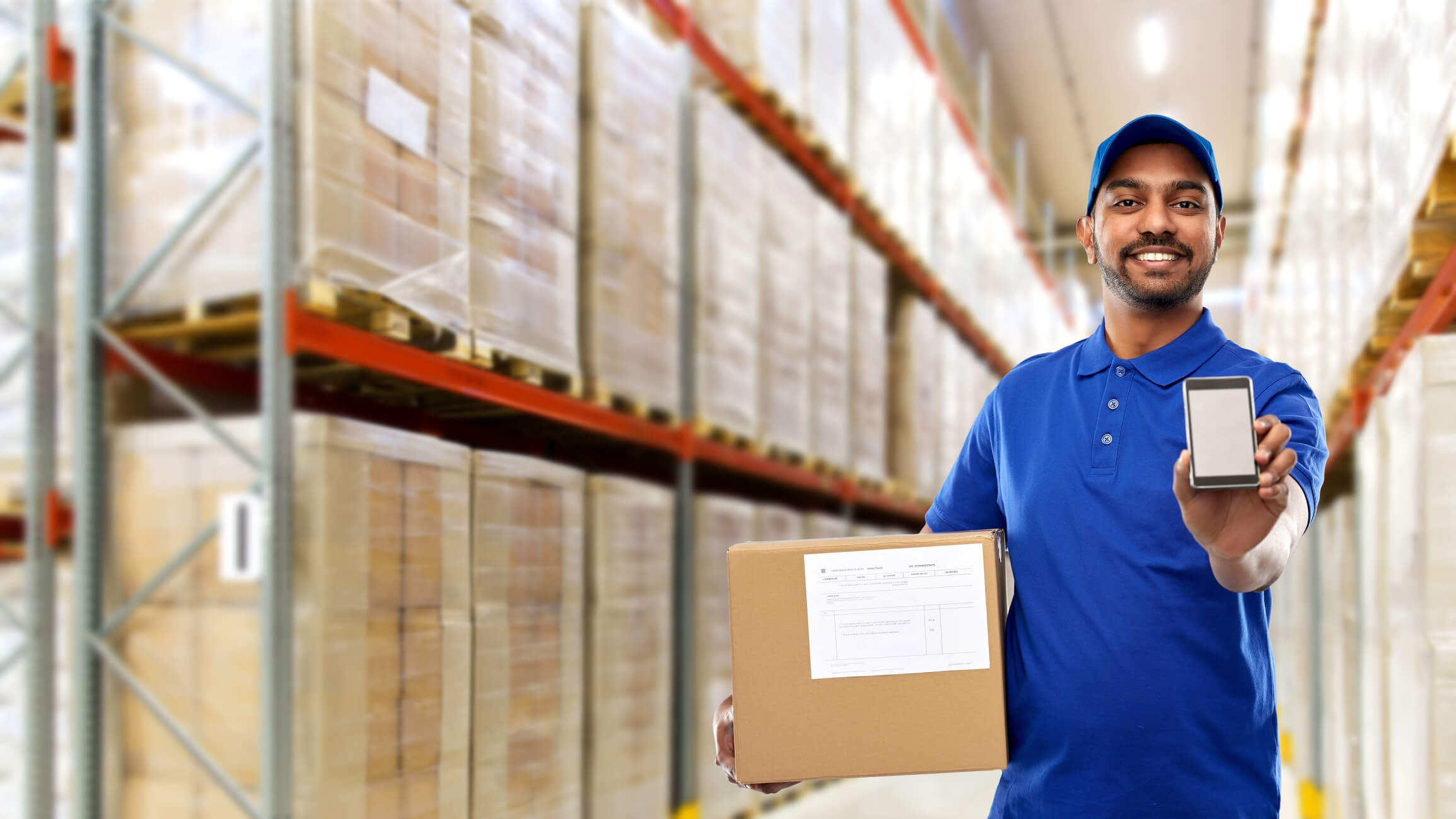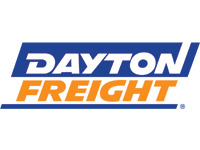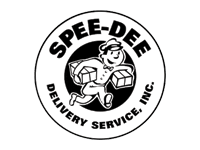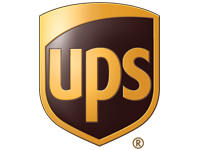Intelligent Shipping
Technology
Large online retailers like Amazon are changing the game. Two day, one day, same day… If you have not reevaluated your shipping and logistics in the last 12 months, you are likely not meeting customers current expectations.

-
Would you benefit from rates that are derived from leveraging the negotiating power of thousands of other companies?
-
Do you need technology that permits real time multi-carrier rate comparisons?
-
Do you want all of your tracking in one place?
-
Could you benefit from: flexible and friendly reporting tools, ability to ship from warehouse and ship from store, compare parcel vs. LTL?
If you answered ‘Yes’ to any of these questions, let us introduce you to a better shipping experience that will lower your shipping costs and may be available to you at no cost. Our shipping solution is compatible with all major shippers.
All Major Shippers























From the blog
Check out the latest posts down below!

Cloud-Based, Multi-Carrier Shipping Software – The New Standard
Shipping is all about movement. It is about moving product out of warehouses, fulfillment centers, stores, offices, and supplier locations to homes and businesses down the street or across the globe. But there is a growing need to move them faster, more efficiently, and less expensively to keep up with customer delivery and free shipping expectations.
Multi-carrier shipping software has been around for many years. But the latest cloud-based platforms are providing businesses with more capabilities than ever. They go beyond just printing labels and are true transportation management systems (TMS) designed to control delivery and costs. Expanding needs and growing businesses need scalable solutions that are easy to deploy, powerful, and have the speed to handle all the demands of omnichannel shipping.
They are doing it by moving on-premise multi-carrier shipping software capabilities to the cloud.
Here are three ways that cloud-based, multi-carrier shipping software is coming of age:
1. Beyond parcel
While a carton or two dropped on a porch or doorstep or left in a mailroom by a national carrier is the image that many have when they think of parcel delivery, today’s customers are savvier and more demanding. They want what they want when they want and where they want. And increasingly, they expect all of that for free. This includes luxury goods, home furnishings, and furniture, which were long thought to be the domain of brick-and-mortar stores, shipped in consolidated loads from distribution centers via freight. And increasingly, what they want requires personalized service. All of this is changing the way shippers need to ship, regardless of where the product is purchased or where it is delivered.
While it is true that in the end, all delivery is local delivery, it is also true that local is no longer just about couriers. eCommerce demand is now attracting the services of local carriers across a wider spectrum of carrier modes who offer new last-mile residential delivery services that have traditionally been handled by parcel carriers. Multi-carrier is now becoming multi-modal. Of course, the shift to more localized delivery services adds a level of management complexity to the plate of many shippers and that requires the right TMS system.
2. Everyone’s a shipper
It’s easy to think that only eCommerce merchants and retailers have to manage more frequent and small shipments, but today’s shippers are just about everyone. They can be manufacturers shipping parts to an auto store, a lawyer sending paperwork across town, and eCommerce sellers drop-shipping from suppliers, stores, and other sources of inventory in closer proximity to consumers. Omnichannel shipping strategies require a TMS that is built to handle the scale of so many different kinds of users.
Of course, just as no shipper works alone, no software system does either. It is important that the TMS is able to Integrate easily with ERPs, WMSs, eCommerce websites, and customer service portals to handle the entire parcel lifecycle and reduce manual errors. The key is not only finding the right apps, but also finding the right technology partner.
3. Controlling pack and ship
Despite what you are shipping, where you are shipping from, and where you are shipping to, the best shipping software can help you do it better. Quick and easy deployment, flexible and role-specific workflows, dangerous goods and international shipping compliance, and support of omnichannel delivery services can be the key to eCommerce success.
Regardless of how much shippers work to keep their shipping costs under control, they can easily lose money by unexpected fees. One of the most common—and easily avoidable with the right strategy and technology—is dimensional weight (DIM) fees. If shippers aren’t packing correctly and with transportation costs in mind, they will wind up spending more than they planned, leading to reduced profits, not to mention disappointed and downright annoyed customers. Cartonization reduces DIM fees, waste, and customer packaging fails, and as more carriers charge for shipping air, the technology is becoming indispensable.
For success, shippers need not only cloud-based shipping software to keep up with today’s needs, but one that can go beyond traditional multi-carrier shipping software and stay ahead of the game.

Fast Shipping or Free Shipping - What’s More Important?
Thanks to the Amazon Effect, today’s consumers are expecting the conveniences of free and fast shipping. Zappos started the trend by implementing free shipping and free returns in 2003 and free overnight shipping in 2007. Yet, the Amazon Effect propelled this phenomenon by offering free two-day shipping with the introduction of Amazon Prime membership in 2005—a bump up from Amazon’s free shipping incentive it offered back in 2002. Soon, retailers like Target and Wal-Mart matched the free shipping offer. Now, Amazon has made one-day free shipping the standard for its Prime members in 2019 and enhanced same-day shipping offerings. As a result, consumers expect free and fast shipping.
While surveys suggest free shipping is more important than fast shipping, various conditions impact ordering decisions. So, it’s essential for warehouse managers and e-commerce store owners to understand what drives consumer motivations behind fast and free shipping and know how to leverage shipping software to support these delivery strategies while mitigating costs. Here are some essential factors to consider:
Free Shipping is a Top Pick for Consumers
Offering free shipping is crucial for attracting prospective buyers and retaining existing customers. The National Retailers Federation’s (NRF) Consumer View report shows that most consumers surveyed (75%) expect free shipping. Moreover, research suggests that free shipping is even more important than fast shipping to consumers. A 2016 Walker Sands survey revealed that free shipping out-weighed same-day shipping and easy returns as a priority by its respondents (88%).
The UPS 2019 Pulse of the Online Shopper report also highlights the significance of shipping costs to consumers as 43 percent of survey respondents noted shipping costs as a determinant in their buying decisions. The importance of free shipping also varies by country. A 2019 Alix Partners report revealed that free shipping affects consumer ordering decisions the most in France (75%) and the United States (72%). Thus, offering free shipping impacts ordering decisions heavily.
Without offering free shipping, e-commerce stores risk losing potential sales. Even Etsy is encouraging free shipping by advertising online stores that provide this offer for the 2019 holiday season. So, e-commerce leaders need to consider offering free shipping to stay competitive.
But Fast Shipping is Important, Too
While consumers are typically patient with receiving their orders, they also have a threshold based on the product ordered and the urgency for the product. An Internet Retailer and BizRate Insight survey revealed that consumers were willing to wait three to five days for clothes but expected household items like cleaning supplies within 24 hours. Moreover, a 2019 survey from Alix Partners revealed that the average consumer expects the maximum delivery time for orders to be no more than 4.3 days.
E-commerce stores can risk losing sales and customer loyalty with delayed shipping as consumers can take delayed shipping as a cue to abandon their shopping carts. So, it’s still critical for warehouse managers and e-commerce store owners to consider fast shipping options.
Our Shipping Solution Will Help You Solve for Both
Warehouse managers and e-commerce store owners can use shipping software like ours to help facilitate fast shipping via automation tools and features. For instance, warehouse managers and e-commerce store owners can use our software’s rate comparison tools to help compare shipping costs and services across multiple carries all from one screen. They can also set up to choose the fastest, cheapest shipping option automatically by creating default settings to compare rates on factors, such as weight and same transit time.
Our shipping platform also help speed up the fulfillment process by allowing warehouse managers to customize settings and automate tasks.
Bottom Line
Incorporating both free and fast shipping is ideal even as free shipping is more essential. But customers’ needs are a vital consideration, and shipping software is crucial for executing these strategies effectively. By using shipping technology like ours, e-commerce leaders can offer better support for implementing fast and free shipping offers and improve their bottom-line.

Should Your Business Rely on WorldShip?
When you shop for your next car, do you expect to shop only one dealer and pay the window sticker price? Probably not, however, if your business currently relies on a carrier based shipping tool like UPS’ WorldShip or FedEx’s Ship Manager you are doing exactly that for your business’s shipping.
Businesses often choose a carrier based platform because they mistakenly believe that other tools complicated to implement. However, a multi-carrier platform can often be easier to implement and can cut shipping costs by 15% or more.
Evaluating the benefits and costs of a single-carrier system vs. an integrated, multi-carrier system is crucial to determining which approach is best for your company. Key areas to consider include:
-
Flexible Choices Single-carrier systems limit your ability to compare rates and select another carrier’s services. A multicarrier system allows you to do a side-by-side comparison of all carrier rates and delivery options and select the one that is most advantageous for you.
-
Knowledge While carrier rates may be similar, surcharges and special fees can have significant impact on your total shipping costs. A multi-carrier system is more likely to display all relevant fees up front, allowing you to make a more informed decision on the carrier and service you would like to use. Typical surcharges and fees you should be aware of include commercial delivery area, residential delivery area and fuel surcharges as well as address correction fees and dimensional rating charges. A multicarrier system with automatic address correction will avoid duplicate delivery fees on a single shipment.
-
Ease of Use While single-carrier solutions may be free, it will be necessary to install multiple one-carrier systems in order to have complete carrier shipping information. This is a cumbersome approach and often requires different applications and user interfaces. It will also complicate integration with order entry systems and often requires more training.
-
Integration Single-carrier solutions generally need to be installed on individual computers while a robust multi-carrier system can be installed on a central server and accessed from multiple locations. Further, a multi-carrier system provides seamless integration with your warehouse, carrier vendors and your ERP systems thus improving cost efficiencies, data accuracy. Reps may view shipment status through a single interface, eliminating the need to access individual carrier sites, which improves your customer responsiveness.
To select a shipping system with the highest ROI, look for the following characteristics:
- Retrieves your carriers up-to-the-minute routing and relevant shipping data
- Side-by-side comparisons of services from multiple carriers, their rates and surcharges
- Integrates seamlessly with your order entry and customer address databases
- Eliminates manual re-entry of order info
- Consolidates carrier billing
- Easily automates internal business rules
- Allows uniform address books
- Customizes screen views, labels, forms and reports within minutes

Top 5 Benefits of Using a Multi Carrier Shipping Software
Not too long ago, the idea of multi carrier shipping software was more sci-fi than sales-ready. The ability to automate the entire freight process with a SaaS solution would have prevented countless headaches and errors in previous decades. However there are still many small to medium sized businesses and Fortune 500 companies that rely on old school, approaches to managing shipments.
What is Multi Carrier Shipping Software?
Multi carrier shipping software are platforms that automate and streamline the shipping process. Users can compare quotes from carriers, choose their preferred shipping partner and initiate the freight process. These solutions provide the ability to manage and track all types of freight (trucking, air, ocean, parcel, etc) while other types of shipping software focus on one type.
Multi Carier Shipping Software vs Transportation Management Software (TMS)
Multi carrier shipping software is also referred to as Transportation Management Software (TMS). These are used interchangeably. The only distinction is multi carrier shipping software is used in the context of e-commerce companies who ship directly to consumers. TMS usually refers to all-freight automation platforms.
Cost & Eficiency
The ability to compare shipping options seamlessly allows you to compete for fair pricing. You have full insight into every shipment and can analyze each spend. Our Fortune 500 shippers have seen more than 35 percent in cost savings after switching over from the traditional model.
If for some reason there is a price increase compared to a previous long-term contract relationship with a supplier, it will be recovered with the efficiency of an all-in-one platform. If someone needs to call and email incessantly to find the best quote, opposed to a few clicks, the improvement in efficiency translates to labor savings and more time for other activities.
Compliance & Regulation Automation
In traditional shipping and procurement, each contract needs to be vetted to make sure it follows compliance and safety standards. There are hundreds of regulations that apply to truck freight alone, this is the most frustrating aspect of anyone in paperwork purgatory. Multi carrier shipping software automates these regulations on every spot-buy. Full-service software platforms have built-in compliance standards for air, ocean, parcel and rail freight so you won’t run into any country-specific problems or border crossing issues.
Data Consolidation, Manage & Track Orders
Kids with messy rooms can still find items at will, don’t try to pull this off with stacks of paperwork. Software acts as a database for all shipments, quotes and spend history. Previous shipments are easily found. Shipments can be tracked as needed without additional tools. This data consolidation frees up time for more crucial tasks than digging through desk jungles.
Reduce Chance for Human Error
Human error will always be a concern. Shipping and logistics software eliminates this concern by verifying each aspect of a shipment. Work faster with the peace of mind that your work is error-proof.

Big Surprise In Shipping – UPS Reports: Delivery Costs Are Important To Consumers
OK, not such a big surprise.
According to a recent UPS report, the global shipping giant reports that delivery cost was an important buying consideration to 43% of online consumers. The only single item which was more important was the price of the item itself.
US consumers spend an average of $191 on average per online transaction and will add to their order to “round up” to a level that achieves better shipping terms such as free or faster delivery. However, when pressed, consumers rank “free” ahead of “fast”. A recent study by Dotcom Distribution finds that 67% of consumers are likely to add items to cart to receive free shipping.
Let us introduce you to ways to provide faster shipping at lower costs. Often our solutions are free.

Free and Fast: Online Customer Expectations Continue To Evolve
Since Amazon unveiled its Prime membership in 2005, unlimited two day shipping for free was a huge differentiator and set Amazon apart from other online retailers. As other retailers raced to catchup, Amazon continued to raise the bar announcing free one-day shipping in 2019.
Although some competitors have once again begun matching Amazon's fulfillment efforts, smaller merchants are struggling to keep up with the costs and delivery pressure.
One key solution for managing costs is for small and midsize retailers to band together to leverage their combined shipping volumes to achieve comparable shipping costs and service levels. The use of technology can help meet customer’s ever changing expectations. Tools that permit real-time shipping rate comparisons as well as ship-from-store and ship-from-warehouse technology can short the delivery cycle and reduce costs.
Let us introduce you to solutions that can better position you to meet current consumer demand regarding the speed and cost of shipping. Our solutions are often free.